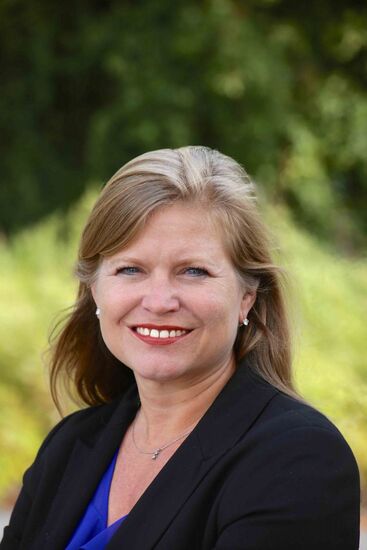For the West Cork native is the vice president of research, policy and education of the Food Bank for New York, and the tractor-trailers are part of that organization's efforts to put a dent in a hunger problem that affected close to half the city's population in 2009.
"It's a huge operation," she said.
The organization has its own food bank and soup kitchen, but also acts as an umbrella body for the 1,000 soup kitchens and food pantries in the city.
The fact that starving people aren't seen on street corners, Duggan said, doesn't mean that food is not an issue facing millions of New Yorkers.
"It's the working poor, the elderly, people living with disabilities, people living with fixed incomes, people with children struggling to pay the rent," she said, listing the most vulnerable groups.
Twenty-seven percent of children in the city live below the poverty line. Duggan cited the statistic though she believes that the poverty line is defined conservatively.
The extent of the problem has been acknowledged nationally. President Barack Obama spoke recently of "hunger" in America, though officials prefer not to use the word itself. Last month, nonetheless, the Department of Agriculture issued a report that said 15 percent of Americans in 2008 were "food insecure," by which it meant that sometime during the year they "had difficulty providing enough food for all their [family] members due to a lack of resources." The report was based on a survey of 44,000 households.
The Food Bank of New York argues that the cost of living makes the problem that much worse in America's largest city. To measure its extent, the organization conducts two different surveys, one in conjunction with Marist Poll and the other with Cornell University.
"What we've seen in the last six years is a 60 percent increase in people reporting difficulty in affording food," Duggan said.
More precisely, it went from an estimated 2 million city residents in 2003 to 3.3 million this year. The figure peaked at 3.9 last year, but the Food Bank of New York believes the federal stimulus package helped bring it back down again.
The number of individuals going to soup kitchens and food pantries, the organization's research reveals, has gone up from 1 million in 2004 to 1.3 million in 2007.
People will make decisions about which bills should be paid. The rent often comes first
"It makes perfect sense. The priority is to keep a roof over the kids' heads," said Duggan, who graduated from University College Dublin with a degree in English and later got a postgraduate degree there in film studies.
Health costs are another burden. "That's not going to be a problem in a Northern European country, for example, where health care is a public option," she said.
The Food Bank of New York, together with other frontline groups like City Harvest, focuses on policy and the need to address the structural problems that create poverty.
"We supply food because we don't want anybody to go to bed hungry," Duggan said. "But it's not the sole concern."
Issues like affordable housing and decent wages with benefits need to be addressed, she argued
"The welfare system is almost impossible to navigate," she said.
Often people don't know that they're entitled to the earned income tax credit and other benefits.
"For individuals or families who might be eligible for all of them, it is a nightmare to know exactly what forms to fill out and where to submit them," Duggan said. "Whereas in Ireland and a lot of other countries, the system is somewhat simpler."
The welfare systems in her native land tend to be centralized, with the relevant offices close to each other.
In this country, it's left to faith-based organizations to try to fill the gaps in provision. Seventy-five percent of the soup kitchens and pantries in New York are organized out of churches, synagogues, and mosques.
The idea, though, that that the foreign-born disproportionately use up the food relief programs is a myth, Duggan said.
The elderly, on the other hand, currently make up about a quarter of those who rely on those facilities and an aging baby boomer generation could well increase that proportion to half in 10 years' time.
"That's something we're concerned about. Food kitchens and soup kitchens are not the way we should be taking care of the elderly," Duggan said.
"That's one area that Northern Europe does a better job on: whether in rural Ireland, or in Dublin or in London or in Paris.
"There are guarantees, which is not to say they're perfect," she said.
The elderly, too, are prominent among those who contribute and who volunteer.
For Duggan and her colleagues in the Lower Broadway headquarters, it's important to help out often at the warehouse and at the organization's food pantry and soup kitchen.
Working on the frontline -- for instance, talking to an elderly person and or a mother with children -- puts it all in context.
"They tell you a story that illustrates the numbers," Duggan said.








